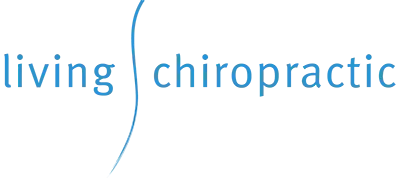Shoulder Pain
“I can’t reach up properly, and sleeping on it makes it worse”
Rotator cuff issues, frozen shoulder, bursitis, or referred nerve pain
Shoulder pain has a way of sneaking into your life and disrupting the things you normally don’t think twice about—getting dressed, reaching for something on a shelf, putting your arm behind your back, or even sleeping on your side. Over time, this type of pain can lead to frustration, fatigue, and feeling like your body just isn’t keeping up with what you need it to do.

You Don’t Have to Put Up with It
If your shoulder pain is holding you back—or worse, if it’s getting worse—now is the time to get it checked. Chiropractic care can make a big difference when it comes to restoring shoulder strength, reducing pain, and avoiding more invasive treatments down the track.
Arm Pain
Why Does My Arm Hurt?
There are many reasons shoulder pain may develop. It could be the result of a strain from lifting or twisting awkwardly, a repetitive action (like using a mouse or lifting weights), or a condition that gradually worsens over time such as bursitis, frozen shoulder, or tendon irritation. Sometimes, it’s not even the shoulder that’s the problem—nerve pressure in the neck or upper back can refer pain into the shoulder region, changing how the muscles work and creating compensation patterns that cause further stress.
Common symptoms include:
✔ Aching or sharp pain in the outer shoulder
✔ Tingling, burning or numbness down the arm
✔ Discomfort when sleeping on that side
✔ Weakness when lifting, reaching or carrying things
✔ Shoulder “drooping” or feeling out of position
✔ Clicking, catching or grinding with movement
You might even notice you’ve started avoiding using that arm altogether, which can lead to muscle wasting and longer-term instability.
What Happens If I Ignore It?
If left untreated, shoulder injuries can become chronic, meaning the pain and dysfunction hang around long after the original issue has healed. When we don’t move properly, the brain starts creating habits that protect the area—even when the danger has passed. This leads to poor movement patterns, compensations, and sometimes pain that turns up in unexpected places (like the neck, upper back, or even elbow).
Over time, untreated shoulder dysfunction can lead to:
- Persistent inflammation and impingement
- Reduced range of motion
- Adhesion or scar tissue formation
- Compensatory neck or upper back strain
- Recurrent flare-ups or re-injury
How Chiropractic Can Help
At Living Chiropractic, we know that where you feel the pain isn’t always where the problem starts. That’s why our approach to shoulder pain starts with a full-body assessment—including your spine, posture, and shoulder mechanics. In many cases, we find that spinal misalignments—especially in the cervical (neck) and thoracic (mid-back) regions—are contributing to altered shoulder function and nerve communication.
Here’s What We Do:
✅ Gonstead spinal assessment – We examine your spine to identify specific misalignments that may be interfering with nerve supply to the shoulder.
✅ Neurological muscle testing – We check for weakness, inhibition, or imbalance in the shoulder and upper limb muscles.
✅ Joint-by-joint analysis – We assess how well your shoulder, scapula (shoulder blade), collarbone, and upper back are working together.
✅ Functional movement testing – We observe how you lift, move, and rotate to uncover patterns of compensation and strain.
Once we’ve identified the cause, your care plan may include:
Specific spinal adjustments to improve nerve flow and communication
Extremity adjustments to restore joint alignment in the shoulder girdle
Soft tissue techniques to ease tight muscles and reactive tendons
Postural support and home advice to reduce aggravation and support healing
We take a whole-body, chiropractic-led approach to shoulder pain. Our goal is not just to reduce your symptoms—but to improve how your shoulder moves, stabilises, and works with the rest of your body so you can get back to doing the things you love.
What the Research Says
A 2018 systematic review published in the Journal of Manipulative and Physiological Therapeutics found that chiropractic joint manipulation, when applied to both the spine and the shoulder, significantly improved pain and function in people with subacromial impingement and rotator cuff-related disorders.
[Hidalgo et al., 2018, JMPT]
Chiropractic care focused on improving spinal mobility and restoring nerve input has also been shown to enhance muscle control and joint stability, both of which are key factors in shoulder recovery and injury prevention.
[Haavik & Murphy, 2012]
“My arm aches, tingles, or just feels weaker than it should”
Nerve irritation, muscle strain, postural overload
Pain in the arm can feel like a dull, constant ache or a sharp, radiating sensation that travels down from the neck or shoulder. Sometimes it’s a pins-and-needles feeling, or even a sense that your arm is heavier or clumsier than usual. Whether it’s one spot that hurts or the whole arm feels off, it can seriously interfere with your daily life—from driving to lifting, working, or sleeping comfortably.

You Don’t Have to Push Through the Pain
If your arm feels tired, weak, or painful more often than not, it’s a sign your body needs help. Arm pain often responds well to conservative, drug-free chiropractic care. We’re here to find the why, not just patch over the discomfort.
📍 Let’s get you back to lifting, reaching, sleeping, and doing what you love—without that nagging ache. Book your assessment today and find out what’s really going on.
Wrist Pain
Common Causes of Wrist Pain
Your wrist is made up of eight small bones, numerous tendons and ligaments, and multiple nerves—all working together to provide movement and stability. Because of this complexity, even small changes in how you move or hold your posture can create irritation or pain.
Common causes of wrist pain include:
Repetitive strain injuries (RSI) from typing, phone use or tools
Carpal tunnel syndrome – compression of the median nerve
Tendonitis or inflammation of the wrist tendons
Wrist joint misalignment following a fall or impact
Neck or upper back misalignment causing referred pain
You may experience:
✔ Aching or burning in the wrist or hand
✔ Numbness or tingling in your thumb, fingers or palm
✔ Weak grip strength – jars, bottles, or lifting feel harder
✔ Pain that worsens at night or with activity
✔ Clicking, stiffness or “giving way” under pressure
Why It’s Not Just a Wrist Problem
In many cases, the source of wrist pain is not the wrist itself. A misalignment or restriction in the elbow, shoulder, or neck can change the way nerves function and muscles fire—placing strain on the wrist over time. That’s why treating only the local area often doesn’t solve the issue.
If left unaddressed, chronic wrist pain can lead to:
Worsening nerve irritation or numbness
Changes in grip strength or coordination
Inflammation or swelling in surrounding tissues
Sleep disturbances or loss of hand function
Greater risk of developing conditions like carpal tunnel syndrome
How Chiropractic Can Help
At Living Chiropractic, we don’t just look at your wrist—we examine how the entire upper limb and spine are functioning together. Our goal is to find the true source of your wrist pain and improve the way your nervous system, muscles, and joints are working in unison.
Here’s how we help:
✅ Thorough assessment of spine, shoulder, elbow and wrist
✅ Neurological testing to identify altered nerve communication
✅ Orthopaedic tests for tendon, ligament and joint health
✅ Postural and ergonomic review for daily movement habits
Treatment may include:
Gonstead spinal adjustments to relieve nerve irritation at the neck and upper back
Extremity adjustments to correct joint alignment in the wrist or elbow
Myotherapy or massage to release tight muscles and fascia
Ergonomic advice for desk setup, phone use, or repetitive tasks
Stretches and strengthening exercises to support long-term healing
We often see patients who’ve tried splints or medications with little success—only to realise the issue was coming from the spine or shoulder all along. A chiropractic approach helps reconnect the dots and restore balance through the whole system.
What the Research Says
Studies show chiropractic care may help reduce pain and improve function in people with wrist and hand complaints—particularly when nerve interference from the cervical spine is involved. A 2014 study published in Manual Therapyfound that spinal and peripheral joint manipulation improved strength, function, and mobility in people with upper extremity disorders.
[Fernández-de-Las-Peñas et al., 2014]
Additionally, restoring cervical alignment can improve nerve function and blood flow to the upper limb—often key in resolving stubborn wrist conditions like carpal tunnel syndrome.
[Haavik & Murphy, 2012]
“My wrist feels weak, sore, or stiff – especially after work or using my phone”
Repetitive strain, carpal tunnel, joint instability
Whether you work with your hands all day, type at a desk, or just spend a bit too much time scrolling on your phone, wrist pain can sneak up fast—and stick around. For some, it’s a sharp twinge with certain movements. For others, it’s a deep ache, numbness, or a loss of strength that makes everyday tasks harder.
When wrist pain becomes part of your daily routine, it’s a sign that something needs attention—before it turns into something more serious.

You Don’t Have to Adapt Around Wrist Pain
You use your hands for everything—so why let wrist pain dictate your day? If you’re tired of shaking out your hands, icing your wrist, or relying on band-aid solutions, it’s time to look deeper.
📍 Our chiropractors are here to help you restore movement, relieve pressure, and improve your long-term hand and wrist function—naturally.
Book today and start feeling the difference.
